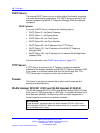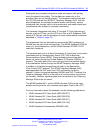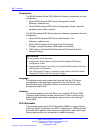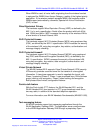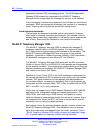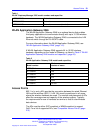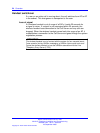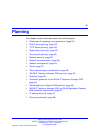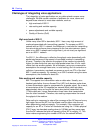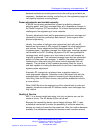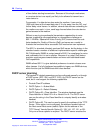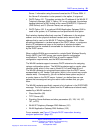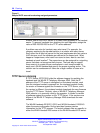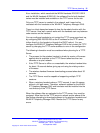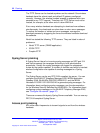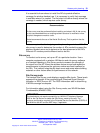
26 Planning
Challenges of integrating voice applications
The integration of voice applications on any data network causes some
challenges. WLANs create a number of problems for voice, above and
beyond those inherent to most data networks, such as:
•
high overhead of 802.11
• rate scaling and variable capacity
•
power adjustments and variable capacity
• Quality of Service (QoS)
High overhead of 802.11
Unlike many other 802.n standards, 802.11 has a very high amount of
overhead associated with transmitting a packet. To compare an 802.3
network with an 802.11 network, the difference in overhead for transmitting
line-rate minimum frame sizes compared to the line-rate maximum frame
sizes on an 802.3 network can be significant, yet not nearly as significant
as on an 802.11 network.
For 802.11, the difference in effective throughput varies dramatically with
packet size because of the amount of overhead involved in transmitting
a frame. Therefore, the effective throughput of the medium is potentially
higher for data clients that use very large packet sizes than it is for voice
clients that use smaller packets. As an example, using very conservative
assumptions for average frame size, no rate scaling, and no contention or
collisions, transmission overhead consumes as much as 67% of the total
802.11 medium capacity. By contrast, in an 802.3 network using the same
assumptions, the overhead is about 8%.
Rate scaling and variable capacity
802.11b supports four transmission rates or data rates. Usually, as a
handset gets farther from an Access Point (AP), both devices scale down
to lower transmission rates to compensate for a weaker signal. As a result,
a transmission at the 5.5 megabits per second (Mb/s) data rate takes
approximately twice as long as the same size packet transmitted at the
11 Mb/s data rate. Longer transmission times mean less transmission
time for other handsets. Therefore, rate scaling compromises the overall
throughput of the medium.
Rate scaling is necessary to extend the coverage of the AP beyond a very
tight region around the AP, but the effects must be taken into account
when determining medium capacity. For example, if the maximum call
capacity for an AP is 12 when all handsets are using the 11 Mb/s physical
(PHY) layer, two handsets scaling down to 5.5 Mb/s as they move away
from the AP reduces the total call capacity of that AP to roughly 10. This
factor makes engineering the number of APs for the network difficult,
Nortel Communication Server 1000
WLAN IP Telephony Installation and Commissioning
NN43001-504 03.04 Standard
23 September 2008
Copyright © 2004–2008 Nortel Networks
.



